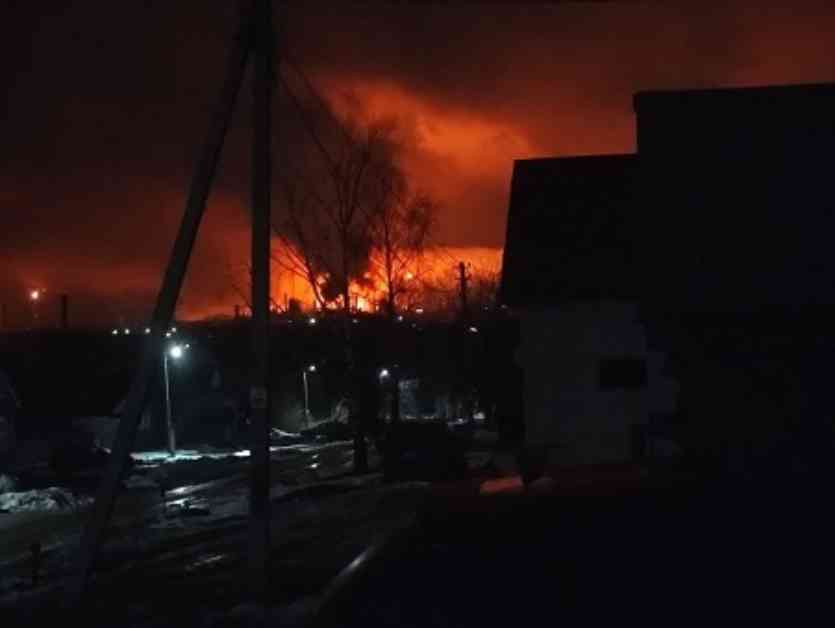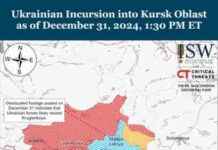In the early hours of January 29th, a significant drone attack orchestrated by Ukraine’s Military Intelligence (HUR) targeted the Lukoil-Nizhegorodnefteorgsintez oil refinery in Kstovo, located in Russia’s Nizhny Novgorod region. The attack, executed by four drones, resulted in extensive damage to the tank farm, sparking a large-scale fire that engulfed the depot. This incident marks a troubling escalation in the ongoing conflict between Ukraine and Russia, with videos of the fiery aftermath circulating widely on Russian social media platforms.
Governor Gleb Nikitin swiftly responded to the crisis, assuring the public that firefighting efforts were underway to contain the blaze. Fortunately, there were no reported injuries resulting from the attack, signaling a silver lining amidst the chaos. However, this is not the first time the Lukoil-Nizhegorodnefteorgsintez oil refinery has fallen victim to drone strikes. In a previous incident in early 2024, the facility sustained equipment damage that necessitated up to two months of repairs, rendering the refinery non-operational during that period.
As the night unfolded, Russia faced a barrage of over 100 drones targeting various regions across the country. Among the reported targets was a “nuclear power facility” in the Smolensk region, as hinted at by Governor Vasily Anokhin. While the specific facility remains undisclosed, Governor Anokhin confirmed that a UAV was intercepted and neutralized within his region, averting any potential casualties or damage. However, reports from the SHOT telegram channel indicated that debris from the downed drone fell in close proximity to the Smolensk Nuclear Power Plant (NPP) near Desnogorsk, raising concerns about the proximity of such attacks to critical infrastructure.
Russia’s Defense Ministry revealed that its air defense forces successfully intercepted and destroyed a total of 104 drones across nine regions. The Kursk Oblast bore the brunt of the attacks, with 47 drones neutralized, followed by Bryansk (27), Smolensk (11), Tver (7), Belgorod (4), and Nizhny Novgorod (3). Additionally, three drones were intercepted over Kaluga, with one each over the Rostov and Leningrad regions. This onslaught marks the third-largest drone strike on Russia this year, trailing behind a 200-drone attack on January 14th and a 121-drone assault on January 24th, targeting various military and industrial installations.
In a bid to bolster Ukraine’s defense capabilities, the United States orchestrated the transfer of approximately 90 Patriot air defense interceptors from Israel to Ukraine through Poland. This move stands as the most substantial weapons transfer between Israel and Kyiv since the eruption of Russia’s full-scale war, underscoring the international support rallying behind Ukraine in the face of adversity.
Kyiv Post, Ukraine’s premier English news organization established in 1995, continues to serve as a beacon of reliable information amidst the tumultuous landscape of global conflicts. With an international reach extending to 97% beyond Ukraine’s borders, Kyiv Post remains Ukraine’s Global Voice, offering unparalleled insights into the evolving geopolitical dynamics shaping the region and beyond.

















